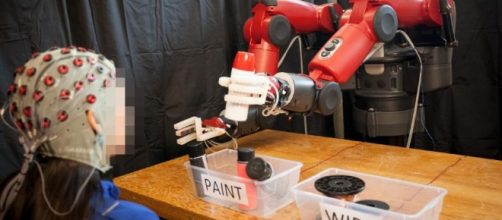technology is evolving faster than our own imaginations. We could only dream of a scenario where we can use our minds to control robots, but recent technological breakthroughs will soon allow us to do just that. A recent experiment conducted at MIT used human subjects to direct robot functions when they felt that the robot committed a mistake.
Thinking for robots
Electroencephalography, or Eeg, has been responsible for some of the biggest breakthroughs in the recent past. The tech allows us to control inoperative limbs in our own body and even lets scientists peer into undiscovered facets of the human brain.
By adapting a form of EEG, scientists at MIT’s Computer Science and Artificial Laboratory, in partnership with Boston University, allowed human participants to take control over robots using their minds.
During this experiment, participants were made to wear a monitoring device on their head that was used to record their neural activity at all times. During this period, they were made to watch a robot perform a simple object-sorting task.
Whenever they noticed that the robot made a mistake while sorting, the participants simply thought of the correction in their mind, and the robot responded by correcting its mistake in real time. The technology relies on understanding and deciphering brain waves down to millisecond, and acting on changes directed by the human mind.
Applications of EEG
This newfound application of EEG can be ground-breaking if implemented properly at a societal level. Robots could be used to perform menial tasks that are beneath human capabilities (such as cleaning out sewers), or perform complex tasks that require human supervision to sustain accuracy (self-driving cars).
This could be the new age of human-robot culmination, where instead of fearing what robots are capable of, we take full-control at all times and direct their intent. The possibilities with this technology are truly incredible, and it is up to us to make the best use of it whenever it is fully ready.

